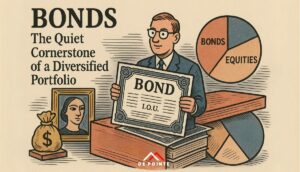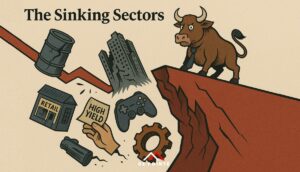Article

Many are considering their 2024 investment plan as we enter the new year. The financial landscape is rife with uncertainties, from geopolitical tensions flaring due to conflict in the Middle East and Russia to impending elections in the UK and the USA; the world will see a significant change in 2024. In this volatile environment, alternative investments are emerging as a strategic choice for savvy investors seeking to weather the storm. This blog explores the projections for alternative investments in 2024, highlighting the crucial role fine art, collectables, and gold can play in managing portfolio risks due to their lack of correlation to traditional markets.
Shift in the Alternative Market, 2024 Investment Landscape
After months of sky-high interest rates gouging profits for buy-to-let investors, interest rates in the UK are predicted to fall to below 4% by the end of 2024; great news for those with buy-to-let mortgages. Better still, for those who already own property, leading agents in the UK are forecasting up to 3% increases in UK house prices. Savills has pegged London retail and industrial warehouses as the top-performing subsector, expecting up to 9.2% annualised returns.
Importance of Risk Management
In the face of geopolitical instability, war, and inflation, risk management takes centre stage. The significance of effective risk management extends across private equity, commercial real estate debt, and residential property investments. One of the most effective means of managing risk is to diversify one’s portfolio with uncorrelated assets such as fine art or gold.

Success Stories in Alternative Investments
Amidst the challenges, success stories emerge, underscoring the appeal of alternative investments. Commercial property showcases triumphs, private equity boasts achievements, and the commercial real estate debt market celebrates success. These narratives highlight the potential for substantial returns in alternative investments, even in tumultuous times.
Lessons from the 2008 Financial Crisis
Drawing lessons from history, we observe how alternative assets such as fine art and collectables can act as resilient pillars in economic uncertainty. In the aftermath of the 2008 financial crisis, while traditional markets were reeling, the art market demonstrated remarkable strength. Notably, on the same day Lehman Brothers crashed, Damien Hirst set a groundbreaking record, grossing over $200 million in a two-day auction—an impressive testament to the uncorrelated nature of alternative assets.
Future Outlook for Alternative Investments
Diversification emerges as the key to navigating the future of alternative investments. Unlisted assets gain prominence, with commercial real estate debt anticipated to witness market expansion and increased offshore investments. Despite potential supply issues in the residential property market, long-term value and passive income opportunities persist.
In conclusion, the alternative investment landscape presents myriad opportunities for informed and adaptable investors. The success stories and the uncorrelated nature of assets like fine art and gold reinforce the potential for substantial returns. Effective risk management remains crucial in these uncertain times, ensuring investors can confidently navigate the evolving market. As we move through 2024, the optimistic sentiment prevails, suggesting that alternative investments are resilient and offer viable growth and wealth accumulation avenues.






